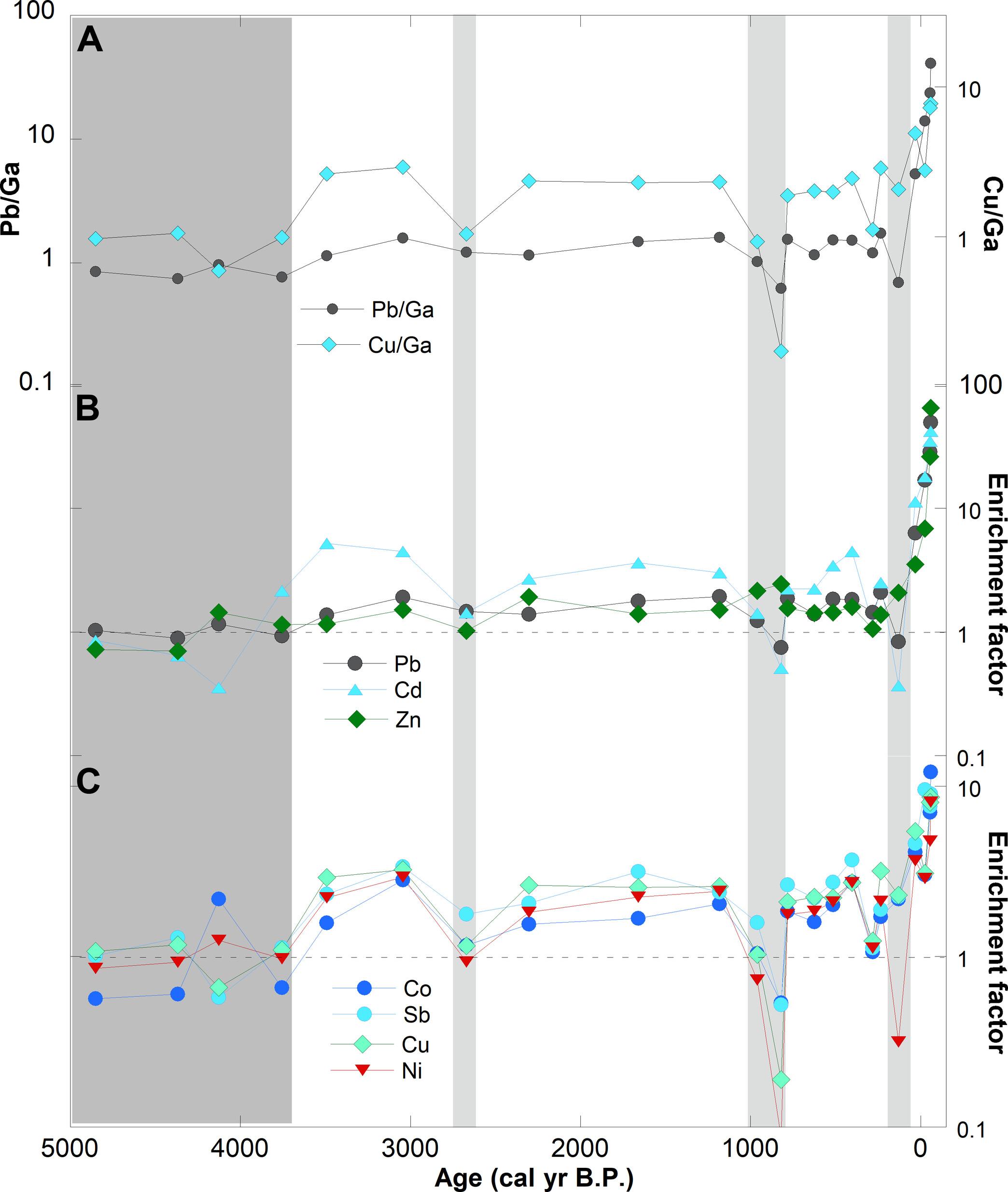全新世晚期西北太平洋上空的大气颗粒物:火山、尘埃和人类干扰
IF 11.7
1区 综合性期刊
Q1 MULTIDISCIPLINARY SCIENCES
引用次数: 0
摘要
矿物气溶胶是地球动态生物地球化学系统的关键组成部分,但其成分和质量却随时间而变化。我们在日本北部的泥炭沼泽中重建了全球第二大尘埃源--东亚的矿物气溶胶通量模式。利用地球化学指纹识别技术,我们发现在过去约 3600 年间,大量但多变的火山砾通量主导了区域气溶胶负荷。通过地球化学特征可识别出人类信号,即污染物金属以及东亚大陆尘埃的升高。在距今约 700 年之后,随着西风气流的增强和南移、夏季季风强度的减弱以及农业的扩张,尘埃通量有所增加。从 20 世纪开始,沙尘通量增加了两倍。这在很大程度上归因于人类活动,表明向西北太平洋输出的气溶胶发生了重大变化,主要微量营养元素通量随之增加,污染通量增加了 16 倍。本文章由计算机程序翻译,如有差异,请以英文原文为准。

Atmospheric particulates over the northwestern Pacific during the late Holocene: Volcanism, dust, and human perturbation
Mineral aerosols form a key component of Earth’s dynamic biogeochemical systems, yet their composition and mass are variable in time. We reconstruct patterns in mineral aerosol flux from East Asia, the second largest global dust source, in a peat mire in northern Japan. Using geochemical fingerprinting, we show for the past ~3600 years that high but variable tephra flux dominated regional aerosol loads. A human signal was discernible as elevated pollutant metals, along with East Asian mainland dust, identifiable by its geochemical signature. After ~700 years before the present, dust flux increased as the westerly jet intensified and moved south, the summer monsoon strength reduced, and agriculture expanded. From the 20th century, dust flux increased by two times. Attributable largely to human activity, this demarks a major change in aerosol export to the northwestern Pacific with accompanying increases in fluxes for key micronutrients and increased pollution flux by 16 times.
求助全文
通过发布文献求助,成功后即可免费获取论文全文。
去求助
来源期刊

Science Advances
综合性期刊-综合性期刊
CiteScore
21.40
自引率
1.50%
发文量
1937
审稿时长
29 weeks
期刊介绍:
Science Advances, an open-access journal by AAAS, publishes impactful research in diverse scientific areas. It aims for fair, fast, and expert peer review, providing freely accessible research to readers. Led by distinguished scientists, the journal supports AAAS's mission by extending Science magazine's capacity to identify and promote significant advances. Evolving digital publishing technologies play a crucial role in advancing AAAS's global mission for science communication and benefitting humankind.
 求助内容:
求助内容: 应助结果提醒方式:
应助结果提醒方式:


